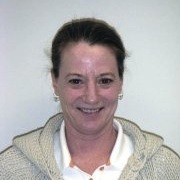|

Steven Humphries |
|

Datta Kaur Khalsa |
Online TESOL teacher-training programs provide opportunities
for planning and practice of technology tool integration into classroom
learning. Both new and experienced ESL and EFL teachers can effectively
apply computer-assisted language learning (CALL) to their classroom
strategies. However, technology know-how is not enough. Technology tools
must be associated with proven teaching techniques and assist in ways
that empower students, support interactivity, and create more effective
language learning. In practice, technology for one’s classroom can be
quite simple, but does require knowledge of both available technology
tools and teaching techniques mixed with some creativity.
Through an online TESOL teacher-training program, students can
practice using technology tools while collaborating and discussing ways
that these tools can be applied to their own classrooms. These current
or future ESL and EFL teachers are building technology know-how and
confidence while discussing ideas with fellow classmates and the course
instructor. After years of experimentation with this training technique,
it has been found that teachers immediately begin bridging the gap
between technology and teaching while collaboratively developing
classroom plans and obtaining peer and instructor feedback.
An added advantage to planning with feedback from a group of
fellow teachers is that the technology tools used in the training are
available for free online. These technology tools include mind-mapping
software, blogs, wikis, Google apps and additional
tools, which help create online posters, audio snippets, decision trees,
and group multimedia presentations. The possibilities are extensive
with most technology tools being adaptable to an array of student
audiences and student learning needs. Free technology tools, personal
creativity with shared experiences, and feedback from colleagues is the
formula for success.
First steps for beginning this process are to gather or rewrite
between one and four learning objectives from a current or future ESL
or EFL classroom. Include teaching techniques used in the past, such as
“think, pair, share”; group presentations; decision trees; and academic
reading and learning circles. The list of teaching techniques can be
expanded through review of commercial methodology texts available for
teaching English language learners. Text suggestions include
Celce-Murcia, Brinton, and Snow's (2013) Teaching English as a
Second or Foreign Language, Epstein and Ormiston's (2007) Tools and Tips for Using ELT Materials: A Guide for
Teachers, and Egbert and Hanson-Smith’s (2007) CALL
Environments: Research, Practice, and Critical Issues.
The final step before full implementation is to be assured that
the integration of a technology tool enhances the students’ learning
objective(s) and is not applied for novelty reasons only. Here is one
example of a valuable learning activity with online technology: Ask your
students to identify an authentic language challenge that they have
faced in their lives. As a group, help them brainstorm solutions and
apply the solutions to a mind map using free mind-mapping software such
as “Mind 42.”
If you are training current or future ESL or EFL teachers,
offer them a more dynamic, but similar activity. Ask them to form small
groups and brainstorm ESL/EFL teaching problems in order to create
solutions. As a product of their collaborative brainstorming, the groups
can create concept maps, which connect problems, solutions, classroom
activities, and technology tools. When this activity is completed, they
can present their concept map to others through a multimedia
presentation using (again) free software such as Jing, Scoopit!, or Weebly. The results of this
activity will provide these teachers with newfound confidence in
planning with others, as well as in their ability to apply the concept
mapping plans and technology to their classrooms.
Also, keep in mind that you do not have to be enrolled in a
TESOL teacher-training program to make this process work. You can also
simply find or organize a team of teachers with similar intentions.
These teachers can be located where you currently teach or be a part of
an online network of ESL/EFL teachers. Brainstorm together. Read case
studies, listen to teachers’ trials and begin with small steps—one group
of students, one technology tool, applied in a simple way. Experiment
and feel your confidence grow as your victories multiply!
Technology alone is not enough to effectively train ESL and EFL
teachers or students, but when combined with appropriate teaching
techniques for specified language learning objectives, it opens up a
virtual new world of learning opportunities. When TESOL teacher training
engages participants in practical, collaborative uses of technology
while providing them with the needed support to plan and implement this
technology into their own classrooms, the experience becomes more
memorable and meaningful—just as they would want for their own
students.
References
Celce-Murcia, M., Brinton, D. M., & Snow, M. A. (Eds.).
(2013). Teaching English as a second or foreign
language (4th ed.). Boston: Heinle and Heinle.
Egbert, J., & Hanson-Smith, E. (Eds.). 2007. CALL environments: Research, practice, and critical
issues. Alexandria, VA: Teachers of English to Speakers of
Other Languages, Inc.
Epstein, R., & Ormiston, M. (2007). Tools and
tips for using ELT materials: A guide for teachers. Ann Arbor,
MI: University of Michigan Press
Steven Humphries is an associate professor of TESOL and
chair of the TESOL Department at Shenandoah University. In addition to
his current roles, his past university teaching and administrative work
in TESOL have included positions in Tallahassee, Florida; Seoul, South
Korea; and Panama City, Panama. He enjoys hiking, camping, reading, and
spending time with his wife and two young boys.
Dr. Khalsa has more than 30 years experience in education. She
has been involved with administration, program development, and teaching
training in a number of university and K–12 settings. Since 2000, she
has taught and designed online graduate courses and programs with a
focus on training for online instruction, instructional technology, and
integration of technology in the K–12 classroom. Presently, she is
director of assessment for the Graduate School Department of Education
at University of Maryland, University College. |

